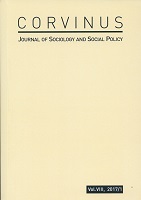Bulgarian Playgrounds in Transition: Do Children’s and Parents’ Perceptions Differ?
Bulgarian Playgrounds in Transition: Do Children’s and Parents’ Perceptions Differ?
Author(s): Türkan Fırıncı OrmanSubject(s): Sociology, Culture and social structure , Transformation Period (1990 - 2010)
Published by: Budapesti Corvinus Egyetem Szociológia Doktori Iskola
Keywords: ideology; children’s participation; playground design; mosaic approach; functional playground dimensions
Summary/Abstract: Focusing on ideological dualism reflected in children’s playgrounds in Bulgaria, this paper examines cross-generational differences in parents’ and children’s perceptions of playgrounds and their equipment designed during the Cold War and post-Cold War periods, respectively. This political conception of playgrounds evokes and aligns with Winner’s (1980) theory and work, “Do artifacts have politics?” Both qualitative and quantitative methods were used within a mosaic approach that incorporated a range of techniques for eliciting young children’s views about extant playground models. The findings of this descriptive analysis provide evidence that both children and their parents endorsed post-Cold War playground designs in Bulgaria because of their better functionality. However, their perceptions differed on functional playground dimensions such as joy, safety, nature, socialization, and design. Significantly, Cold War playground designs were praised for their notable affordance of children’s socialization.
Journal: Corvinus Journal of Sociology and Social Policy
- Issue Year: 8/2017
- Issue No: 1
- Page Range: 71-94
- Page Count: 24
- Language: English

